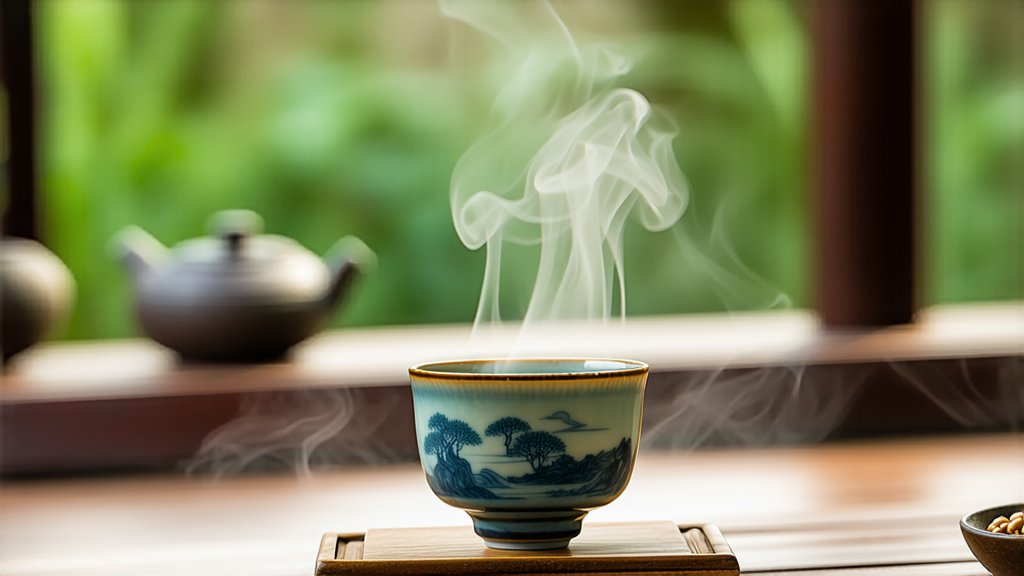
China, the cradle of tea culture, boasts an array of exquisite tea varieties that have captivated connoisseurs for centuries. Among these, Tieguanyin stands as a paragon of oolong tea, embodying a rich history, intricate craftsmanship, and a sensory experience that transcends time. This article delves into the depths of Tieguanyin, unraveling its historical tapestry, exploring its diverse types, elucidating the meticulous production process, and guiding readers through the art of savoring this extraordinary brew.
A Glimpse into History
Tieguanyin's story begins in the mist-shrouded mountains of Anxi County, Fujian Province, during the early Qing Dynasty (1644–1912). Legend has it that the tea was discovered by a poor farmer named Wei Yin, who stumbled upon a wild tea plant while tending his crops. Intrigued by its unique aroma and taste, he propagated the plant and shared its leaves with the local community, sparking a tea revolution. Named "Iron Buddha" in honor of the statue of Guanyin, the Bodhisattva of Mercy, found near the original plant, Tieguanyin quickly gained prominence for its exceptional quality and became a symbol of spiritual and cultural refinement.
Varieties of Tieguanyin
Tieguanyin is not a monolithic entity but rather a family of teas with subtle variations, each offering distinct characteristics. The primary distinction lies between traditional and modern styles:
-
Traditional Tieguanyin: This style emphasizes heavy oxidation and roasting, resulting in a deep, earthy flavor profile with hints of caramel and a lingering sweetness. Its leaves are tightly rolled into balls, resembling pellets or "dragon balls."
-
Modern/Green Tieguanyin: Also known as "Qing Xiang" (green fragrance), this style features lighter oxidation and less roasting, preserving more of the fresh, floral notes inherent in the tea leaves. The leaves are often shaped into tight spirals or strips.
Furthermore, within these broad categories, microclimates and specific growing regions introduce additional nuances, such as those from Xiping, Changkeng, and Ganshan, each imparting unique terroir expressions to the tea.
The Alchemy of Production
The creation of Tieguanyin is an art form that melds nature's bounty with human ingenuity. Here's a glimpse into the multifaceted process:
-
Plucking: Only the tenderest buds and top leaves are handpicked during the optimal growing season, typically spring or autumn, ensuring the freshest and most flavorful raw material.
-
Withering: Freshly picked leaves are spread out under the sun or in shaded areas to reduce moisture content slightly, softening the cell walls for easier rolling and oxidation.
-
Shaking (Tossing): Leaves undergo repeated shaking and tossing in bamboo baskets, which helps to bruise the edges, facilitating partial oxidation and releasing aromatic compounds. This step is crucial for developing Tieguanyin's signature fragrance.
-
Fixation: To halt oxidation, the leaves are briefly exposed to high heat in a wok or roller, preserving their green color and locking in flavor.
-
Rolling and Shaping: Depending on the desired style, leaves are then either tightly rolled into balls (traditional) or twisted into spiral shapes (modern), enhancing both aesthetic appeal and infusion properties.
-
Roasting: Traditional Tieguanyin undergoes multiple rounds of low-temperature roasting to develop its characteristic roasted notes and deepen its flavor complexity. This step is minimal or absent in modern styles.
-
Sorting and Grading: Finally, the tea is meticulously sorted based on size, shape, and quality, ensuring consistency and excellence in every batch.
The Art of Tasting Tieguanyin
Savoring Tieguanyin is an immersive experience that engages all senses. Follow these steps to fully appreciate its nuances:
-
Warm the Teaware: Begin by rinsing your teapot and cups with hot water to cleanse them and enhance the tea's aroma.
-
Measure and Infuse: Use approximately 5 grams of tea per 150ml of water. For the first infusion, steep for about 30 seconds using near-boiling water (around 95°C). Subsequent infusions can be longer, adjusted to personal preference.
-
Observe the Leaves: As the leaves unfurl, observe their transformation from tight bundles to vibrant green expanses, a testament to their vitality.
-
Inhale the Aroma: Before sipping, bring the teapot close to your nose and deeply inhale the rising steam, capturing the complex bouquet of floral, fruity, and roasted notes.
-
Sip and Savor: Take small sips, allowing the tea to coat your palate fully. Notice the initial sweetness, followed by subtler flavors like mineral, vegetal, or creamy textures. Pay attention to the tea's mouthfeel and aftertaste, which should linger pleasantly.
-
Multiple Infusions: Tieguanyin is renowned for its ability to yield multiple infusions, each revealing different facets of its character. Continue steeping, adjusting timing as needed, until the flavor fades.
In conclusion, Tieguanyin is more than just a beverage; it is a window into China's profound tea heritage and a testament to humanity's capacity for artistry and innovation. Each cup tells a story of Anxi's landscapes, traditions, and the dedication of generations of tea farmers and masters. As you embark on your own journey with Tieguanyin, let it be a reminder of the beauty that lies in simplicity, patience, and the pursuit of excellence.